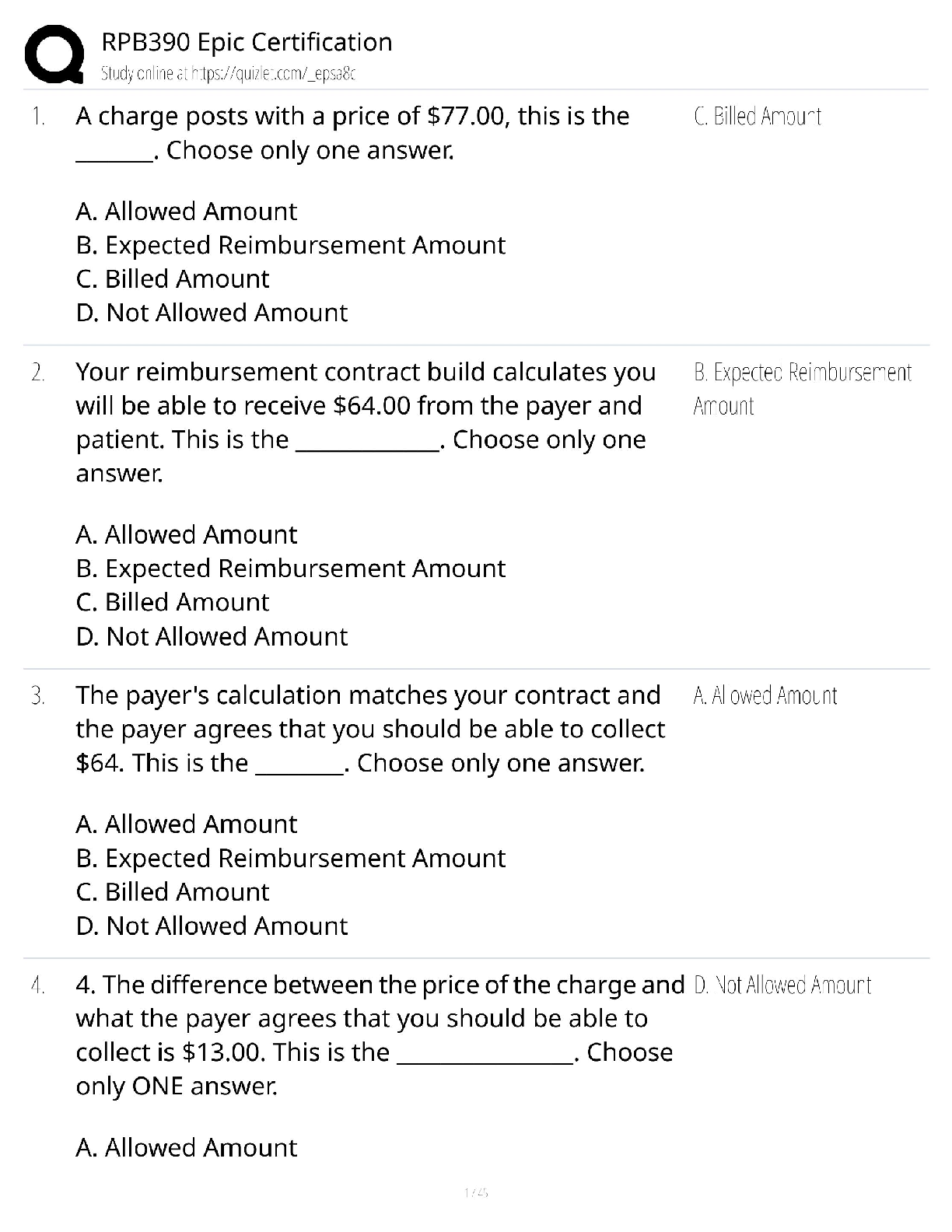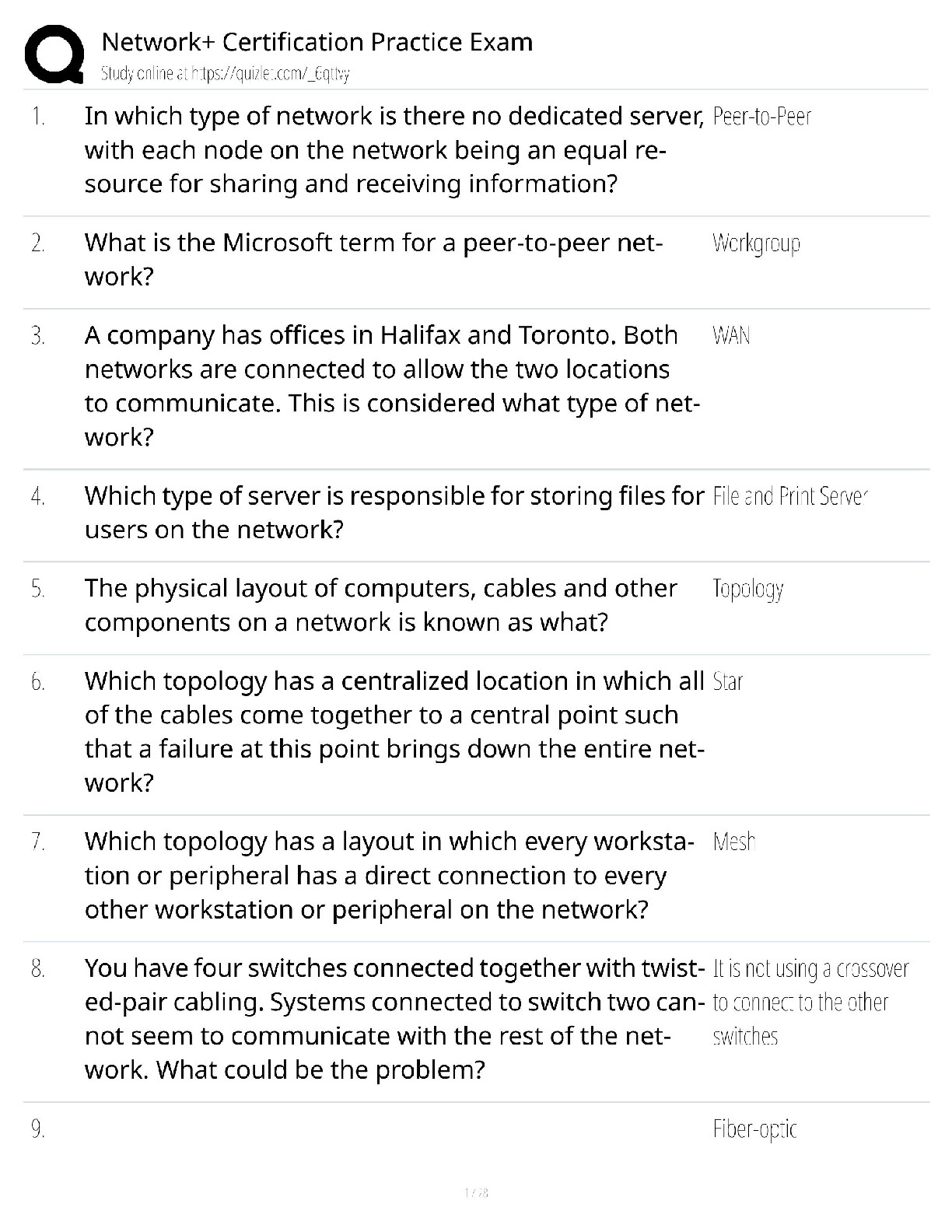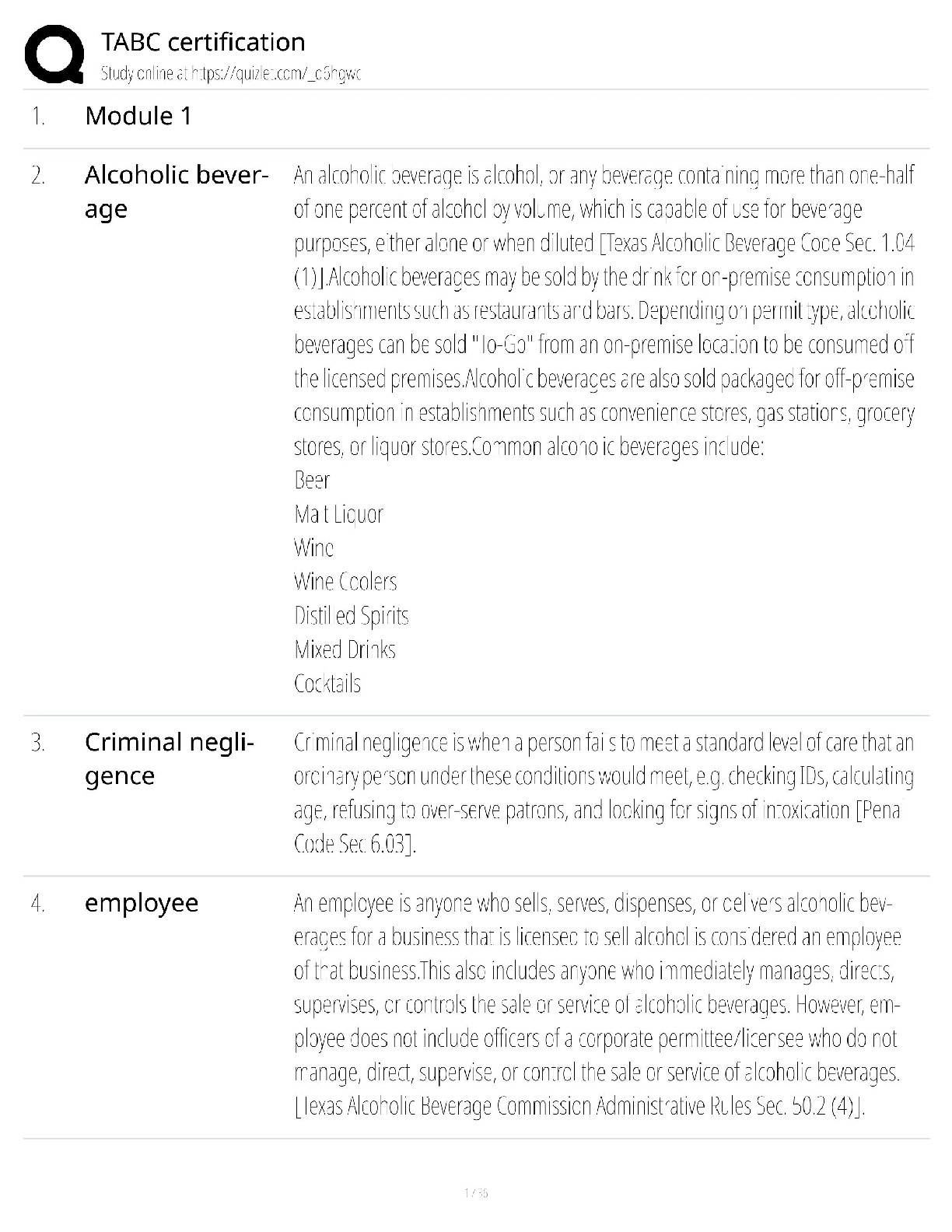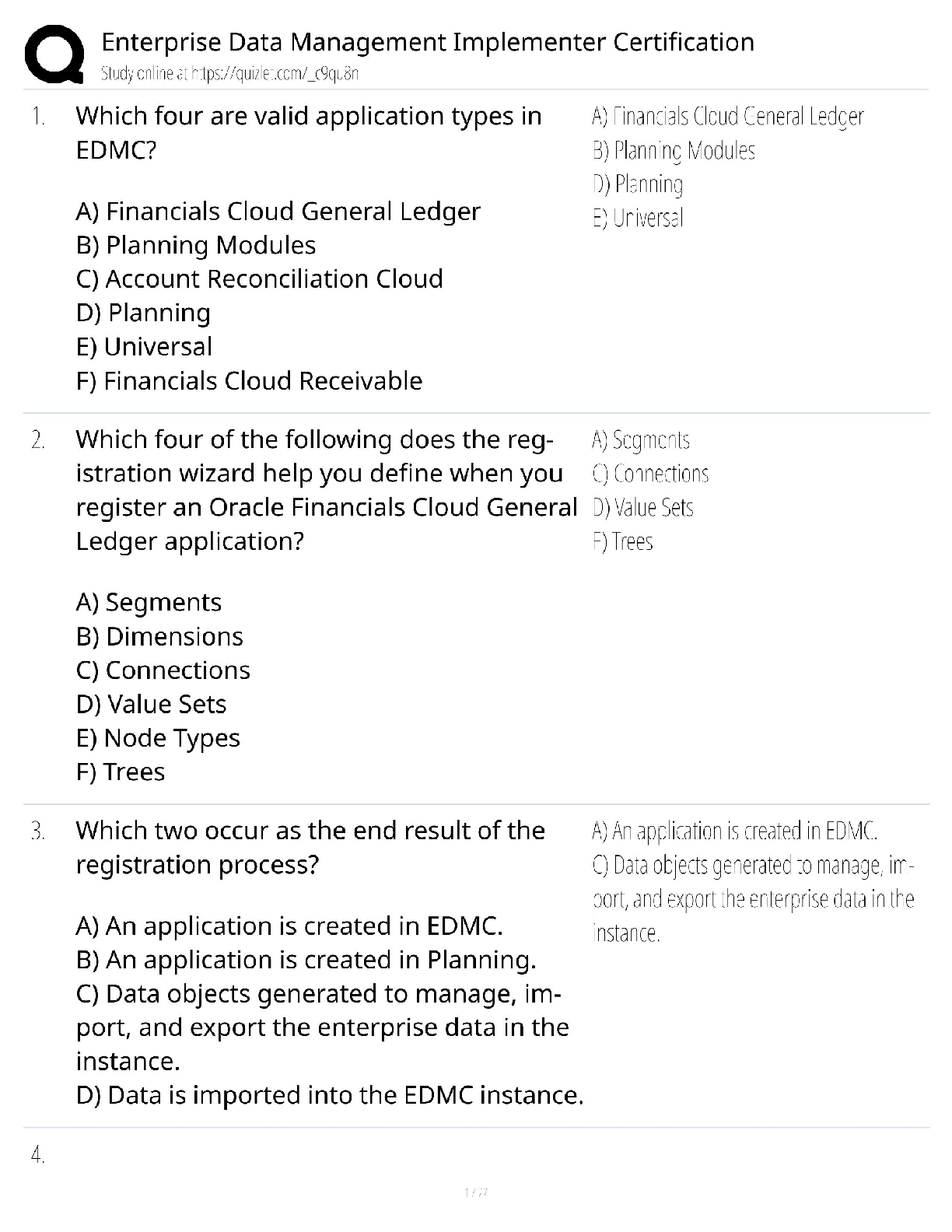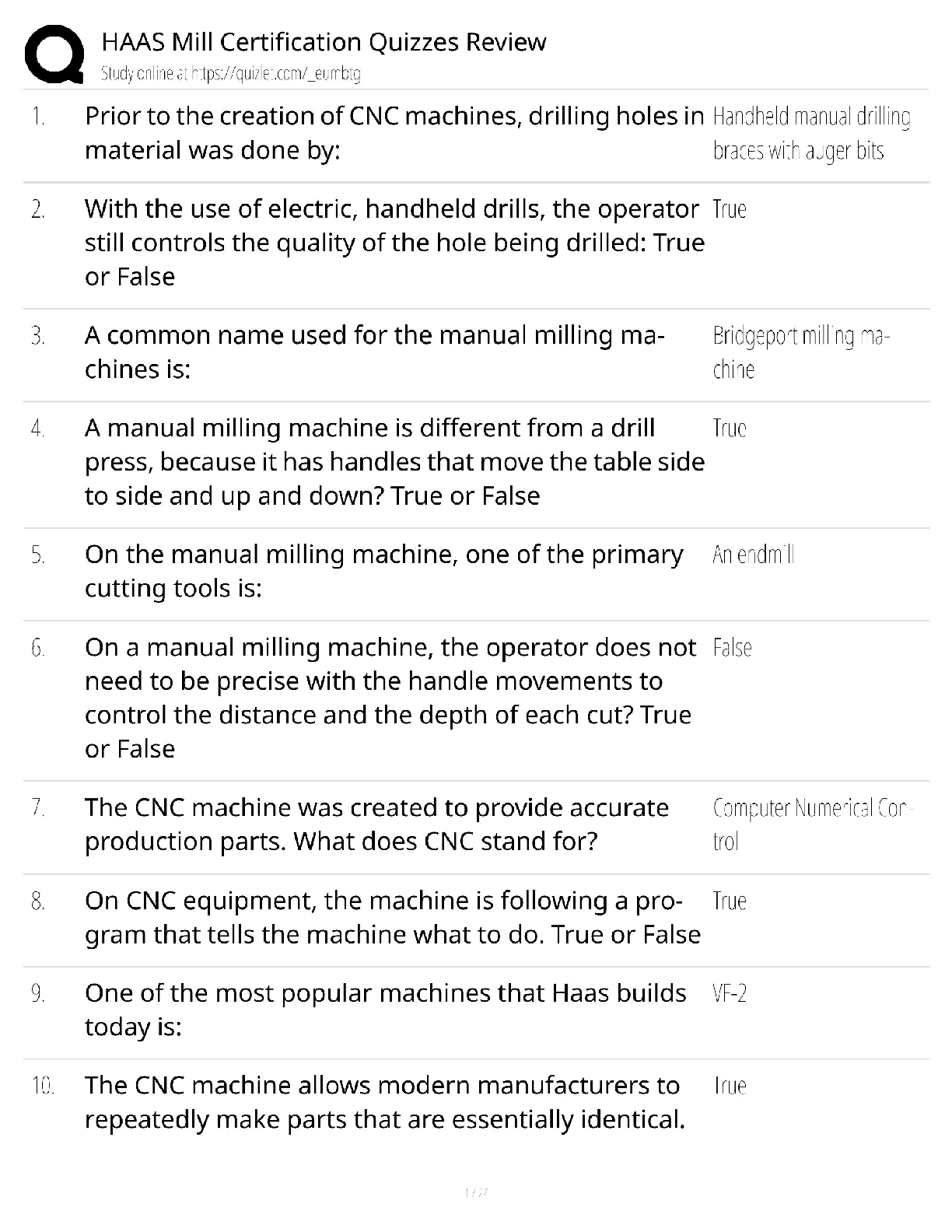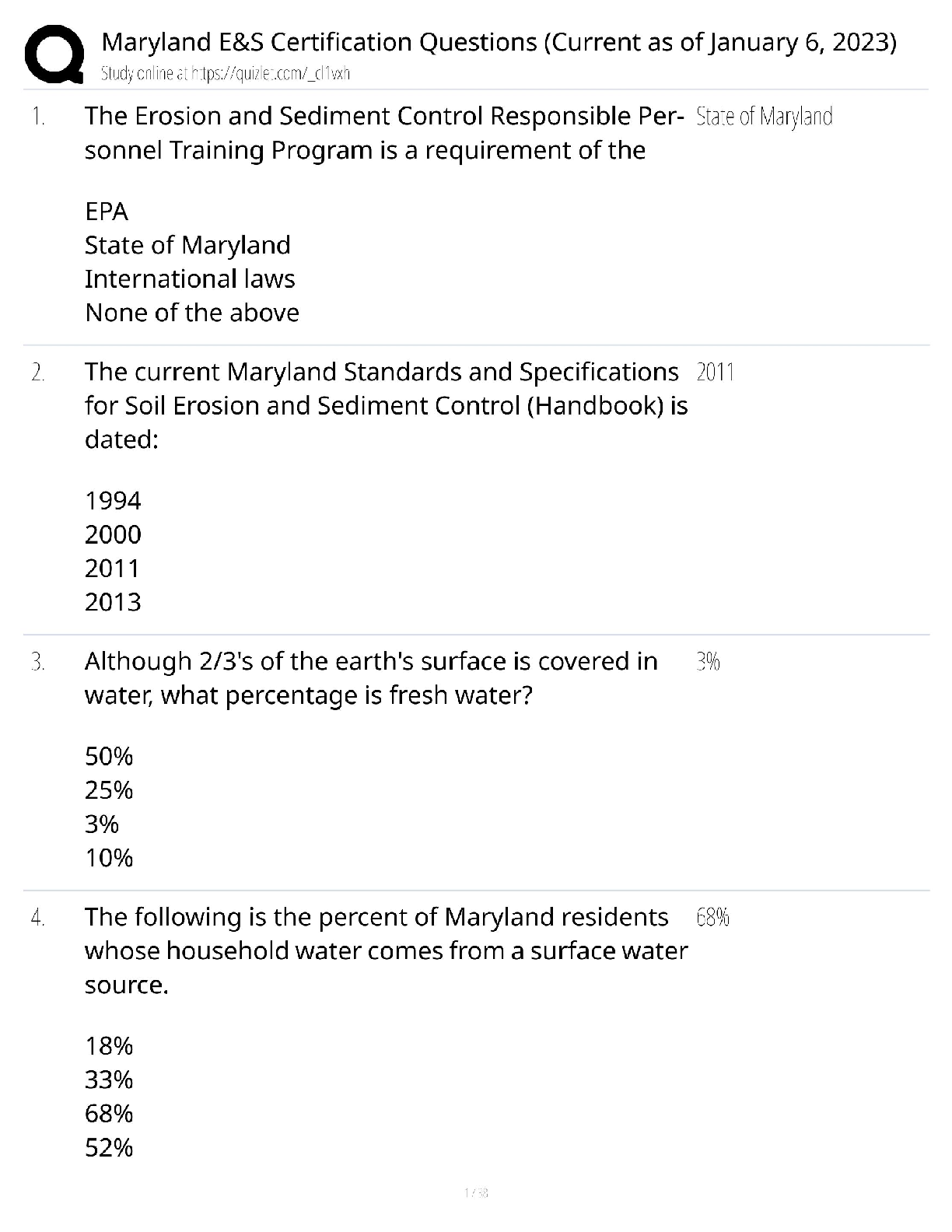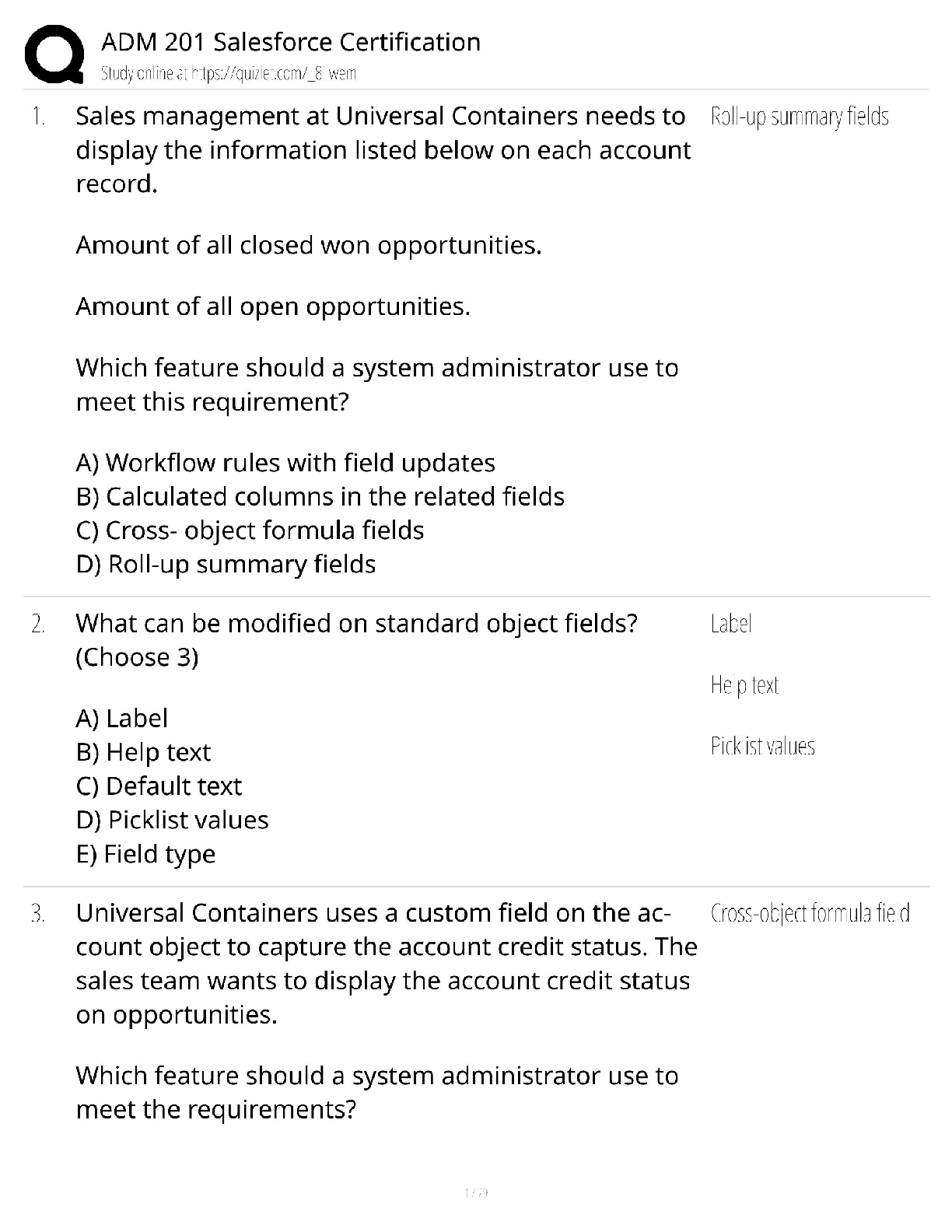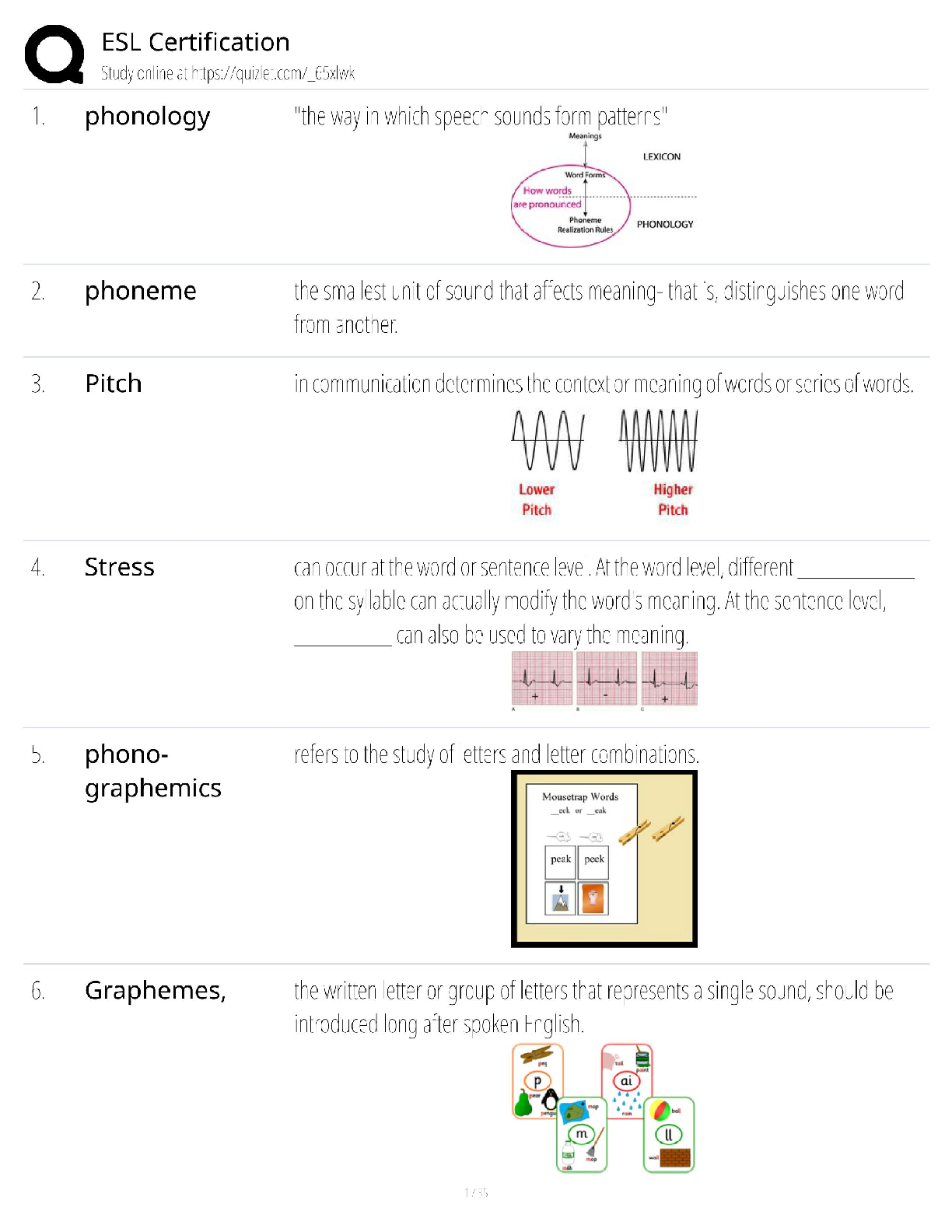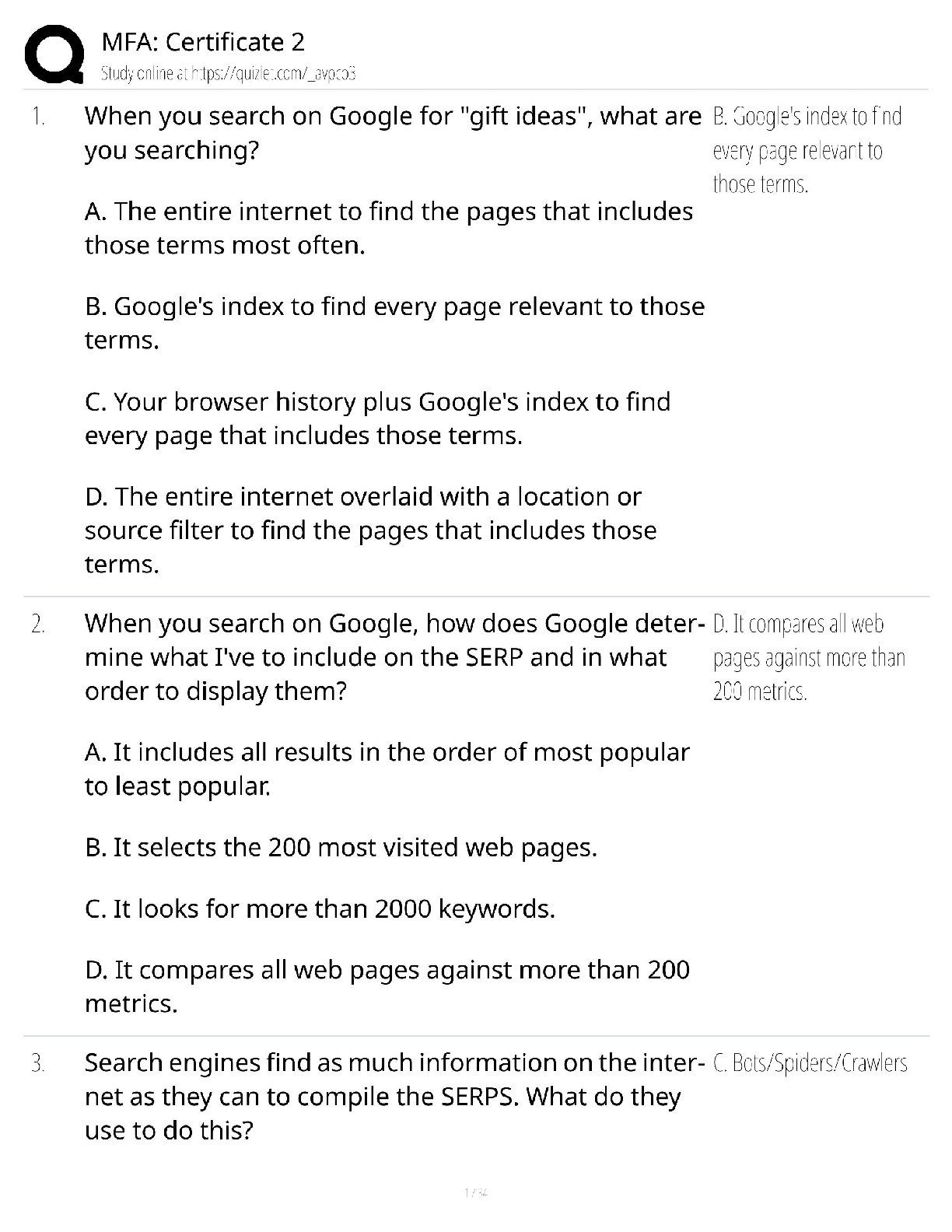Leadership > QUESTIONS & ANSWERS > GOVT 407 EXAM 2 test exam questions and answers NEW COMPLETE DOCUMENT 2020 (All)
GOVT 407 EXAM 2 test exam questions and answers NEW COMPLETE DOCUMENT 2020
Document Content and Description Below
GOVT 407 EXAM 2 test exam questions and answers NEW COMPLETE DOCUMENT 2020 • Question 1 5 out of 5 points Morisot and Cassatt hire Van Gogh and Renoir to paint their studio. Van Gogh and Ren ... oir hire Pissarro as an assistant. Pissarro goes for coffee, leaving the electric paint remover on, and burns the studio to the ground. Morisot breaks her leg jumping from the third-story window, three of Cassatt’s priceless masterpieces are burned, and Renoir suffers second-degree burns. Everyone is mad. Suppose that Morisot and Cassatt are co-owners of the studio. May they join as plaintiffs to sue Pissarro for the damages to the studio from the fire? • Question 2 5 out of 5 points Suppose that Cassatt owns the studio on her own. May she and Morisot join as plaintiffs to sue Pissarro for his negligence, if Cassatt seeks recovery for damage to the building and Morisot seeks damages for her broken leg? • Question 3 5 out of 5 points Assume that Van Gogh and Renoir are liable for the negligence of Pissarro under the law of respondeat superior, if he acted in the scope of his employment in leaving the heat gun on. May Morisot sue Van Gogh, Renoir, and Pissarro in a single action to recover for her broken leg? • Question 4 5 out of 5 points Could Cassatt sue Van Gogh and Renoir for breach of contract for burning down her studio in the process of painting it, and Morisot join as a coplaintiff asserting a negligence claim against the same defendants for the injury to her leg? • Question 5 0 out of 5 points Change the facts a little: Assume that either Pissarro or Gauguin, another employee, left the paint remover on, and Cassatt is unsure which it was. Can she sue them both under Rule 20(a)(2)? • Question 6 0 out of 5 points If Cassatt chooses to sue Renoir alone, may she assert both negligence and breach of contract claims against Renoir for her losses in the fire? • Question 7 0 out of 5 points If Cassatt sues Renoir and Van Gogh for breach of contract, do the rules authorize her to add a claim against Renoir for breach of a separate contract to paint her house in another village? • Question 8 5 out of 5 points Cassatt sues Renoir for breach of the studio painting contract. Later, after losing on that claim, she sues Renoir for a previous breach of the unrelated contract to paint her house. Can she do that? • Question 9 5 out of 5 points Assume that Morisot owned the studio and contracted with Renoir and Van Gogh to paint it. Morisot sues Renoir and Pissarro for negligence and breach of contract as a result of the studio fire. Renoir asserts a claim against Morisot in the same action for payment for the painting work that had been completed before the building burned. Is Renoir’s claim properly joined? • Question 10 5 out of 5 points What would happen if Renoir did not assert this claim in Morisot’s suit, but sued on it separately in a later action? • Question 11 0 out of 5 points Following up on the last example, assume that Renoir also has a claim against Morisot for injuries suffered in an auto accident two months after the fire but before the suit was commenced. Can he assert this claim as well? • Question 12 5 out of 5 points Suppose on the same facts that the only counterclaim Renoir had against Morisot was for the unrelated auto accident. Could he assert it in this action? • Question 13 0 out of 5 points If Morisot sues Renoir for her fire losses, may Renoir assert his claim against Morisot for breach of the studio painting contract and also bring in Cassatt (a co-signer of the contract) as a codefendant on that claim? • Question 14 5 out of 5 points Paredes, a New York City landlord, sues the New York City Housing Department, claiming unreasonable delays in processing applications for refunds of excess housing tax payments. He seeks an order from the court mandating prompt processing of his applications. The Department claims that state law bars it from granting refunds until it completes an audit of the landlord’s rent history, which it cannot do until it receives relevant documents from the State Housing Division. Is the State Housing Division is a person to be joined if feasible? • Question 15 0 out of 5 points Ramirez, from Colorado, sues Bryan, from Montana, for injuries in a three-car auto collision. The suit is for negligence and is brought in a court that applies joint and several liability in tort cases — that is, each party who is found to have negligently caused the plaintiff’s injury is liable to her for her full damages. Bryan moves to dismiss the case for failure to join Grayson, a citizen of Colorado. He argues that Ramirez should have joined Grayson as a co-defendant, because Grayson drove a third car involved in the accident and may have also been negligent. Is Grayson a person to be joined if feasible under Rule 19(a)(1)(A)? Selected Answer: Yes • Question 16 5 out of 5 points Minority firefighters bring a race discrimination case against the Town of Rangeley in federal court. They claim that the Town has historically discriminated against minorities in the promotion of firefighters and seek an injunction requiring that forty percent of all future promotions go to minority firefighters until the percentage of minority lieutenants in the department reflects the percentage of minorities in the town. The Town moves to join the non-minority firefighters in the department as defendants in the case. Are they parties to be joined if feasible under Rule 19(a)? • Question 17 5 out of 5 points Xavier, a Wisconsin citizen, brings a diversity action against Apex Corporation. Xavier claims that Belinsky, an Apex employee, negligently injured him while driving a truck for Apex, so that Apex is liable for his negligence. Apex is incorporated in Delaware, with its principal place of business in Illinois. It moves to join Belinsky, a Wisconsin citizen, as a party in the action, claiming that Belinsky has an interest in the case because his negligence will be adjudicated. Is Belinsky a person to be joined under Rule 19(a)? • Question 18 5 out of 5 points Schutten, a Louisiana citizen, sues Shell Oil Company in federal court. Schutten claims that he owns certain land from which Shell is pumping oil and is entitled to royalties on the oil. Shell (a citizen of states other than Louisiana) claims that it does not owe any royalties to Schutten, since it acquired the mineral rights on the land from the Orleans Levee Board, the true owner of the land, which is entitled to the royalties. Shell moves to join the Orleans Levee Board (a Louisiana public district) in the action under Rule 19(a). Is the Levee Board a person to be joined if feasible under Rule 19(a)? • Question 19 0 out of 5 points Suppose a case brought by a natural gas pipeline company, seeking a license to build a pipeline across the corner of a town. Which of the following interested spectators would have the weakest argument for intervention under Rule 24(a)(2) in the case? • Question 20 5 out of 5 points In an important affirmative action case, Grutter v. Bollinger, 188 F.3d 394 (6th Cir. 1999), reversed in part on other grounds by Gratz v. Bollinger, 539 U.S. 244 (2003), white students rejected by the University of Michigan brought suit challenging the University’s affirmative action policies, which allowed consideration of race as a factor in admissions to the University. Such policies are often defended on the ground that they provide a remedy for past discrimination based on race and that they assist in achieving a diverse student body that provides a vital learning environment. Minority students who planned to apply to the University moved to intervene as defendants in the action to argue in support of those policies. Would the intervening students satisfy the standard for intervention in Rule 24(a)(2)? • Question 21 5 out of 5 points Weninger, a Vermont citizen, suffers from a condition that she believes to be a side effect from taking Sindox, a drug manufactured by Apex Pharmaceuticals. She sues Apex for resulting damages in federal court. Garriega, who took the same drug in Utah a few months later and suffers from the same condition, reads about Weninger’s lawsuit in the papers. Could Garriega intervene as a plaintiff in Weninger’s suit? • Question 22 0 out of 5 points Maroney brings a tort action against Massoud for serious injuries suffered in an accident. Paramount Insurance Company, Maroney’s health insurer, moves to intervene as a co-plaintiff, to recover $175,000 it paid for Maroney’s medical treatment as a result of the accident. Under its health insurance contract with Maroney, Paramount has a contractual right to be reimbursed for these payments from any tort judgment Maroney recovers from Massoud. Which element of Rule 24(a) is Paramount most likely to fail? • Question 23 5 out of 5 points Yost, from South Carolina, worked for the Torrington Company (incorporated in Virginia with its principal place of business there). When hired, he signed an agreement not to work on any competing projects for another company for two years and not to reveal trade secrets. He subsequently resigned and went to work for INA, a Virginia competitor. Torrington sued Yost for breach of the agreement, seeking an injunction barring him from working for INA. Suppose that INA had moved to intervene. Would the court have permitted the intervention? • Question 24 5 out of 5 points Keats, from Minnesota, is arrested by Shelley, a Minnesota police officer, for disturbing the peace. During the arrest, Shelley forcibly restrains Keats, and Keats resists. Keats claims that Shelley used excessive force in making the arrest and sues Shelley in federal court under the federal civil rights statute, 42 U.S.C. §1983. Keats also seeks to recover from Shelley on a state law claim for battery based on the scuffle that took place during the arrest. Does the court have constitutional power to hear the battery claim? • Question 25 0 out of 5 points Does the court have statutory authority to hear the battery claim? • Question 26 0 out of 5 points Assume that the court concluded that it lacked power to hear the battery claim. What should it do with the §1983 claim? • Question 27 0 out of 5 points Assume that the court declined in its discretion to hear Keats’s battery claim. What would happen to the §1983 claim? • Question 28 0 out of 5 points Apparently there was some prior history to the Keats/Shelley altercation; Shelley owed Keats $500 at the time of arrest as payment for work that Keats had done on his house. Keats was upset because he had not been paid and tempers flared, leading to the arrest. Keats therefore asserts a third claim for the debt in his action against Shelley. Does the court have the power to hear it? • Question 29 0 out of 5 points Browning, Blake, and Wordsworth are involved in a three-car collision. Browning, a New Yorker, sues Blake and Wordsworth, both from Ohio, for $80,000 for her personal injuries. Blake asserts a crossclaim against Wordsworth for his own injuries arising from the collision. Does the court have jurisdiction over the crossclaim? • Question 30 0 out of 5 points Suppose that Blake (Ohio) asserts a counterclaim against Browning (New York) for $35,000 for his injuries. Does the court have jurisdiction to hear the counterclaim? [Show More]
Last updated: 3 years ago
Preview 1 out of 6 pages
.png)
Buy this document to get the full access instantly
Instant Download Access after purchase
Buy NowInstant download
We Accept:

Reviews( 0 )
$17.50
Can't find what you want? Try our AI powered Search
Document information
Connected school, study & course
About the document
Uploaded On
Dec 18, 2020
Number of pages
6
Written in
All
Additional information
This document has been written for:
Uploaded
Dec 18, 2020
Downloads
0
Views
284

 answers.png)












